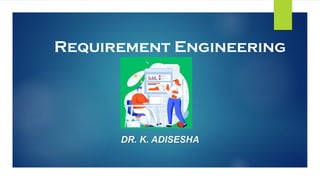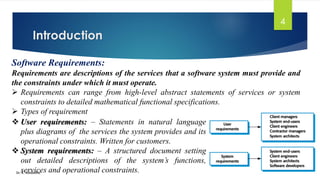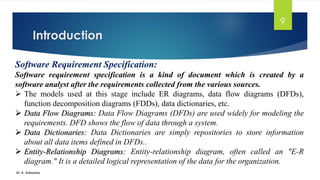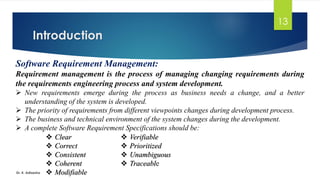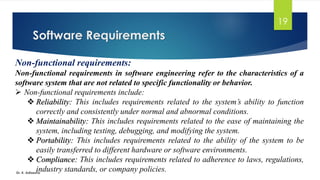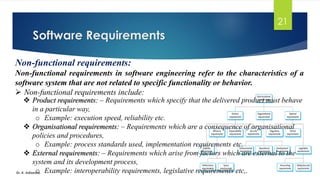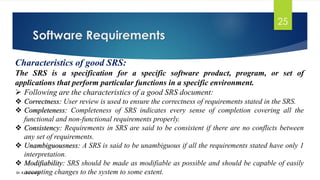The document discusses requirement engineering and provides details on:
- Types of requirements including functional, non-functional, user, and system requirements
- The requirement engineering process including feasibility studies, elicitation, analysis, specification, validation, and management
- Software requirement specification (SRS) documents, their purpose, characteristics of a good SRS, and typical sections
- Functional and non-functional requirements in more depth
